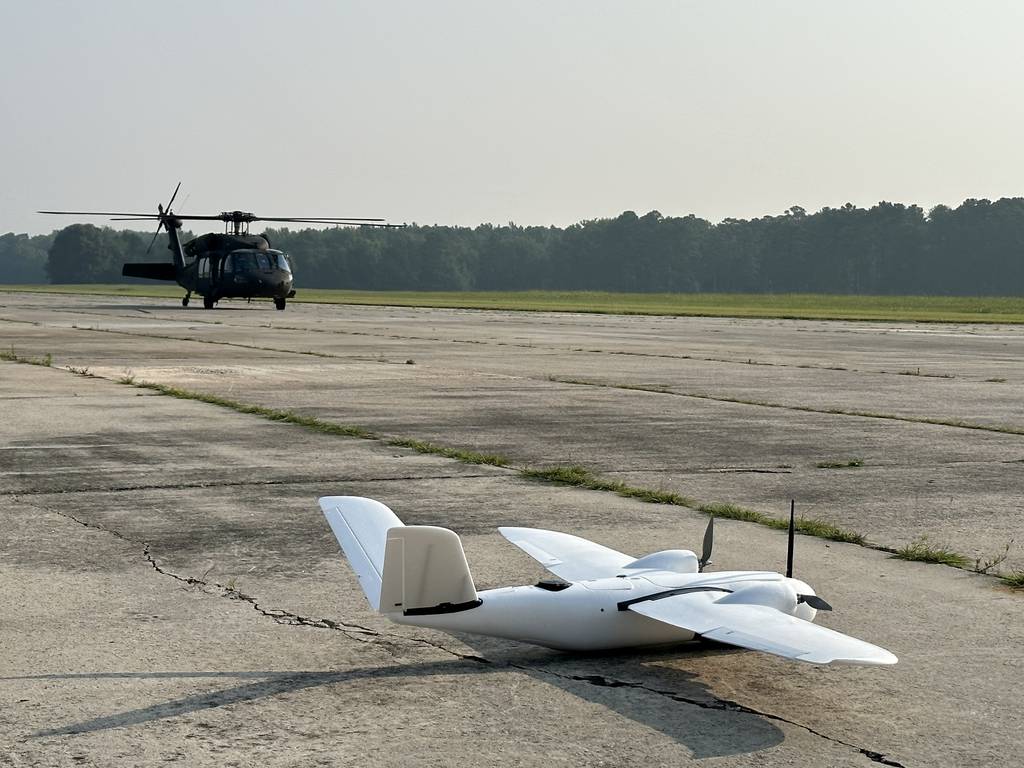WASHINGTON — Can a combination of crowdsourced photography and smartphone software improve air defenses? The U.S. Army is willing to find out.
In trials earlier this month, soldiers in South Carolina used government-issued phones to capture and share images of a drone overhead using a nascent application known as CARPE Dronvm.
The app is funded by the Defense Department and built by Mitre Corp., a manager of federally funded research and development centers. The software is the brainchild of U.S. Air Forces Central, which sought to more easily detect and track airborne threats. U.S. Army Central is spearheading testing among troops.
“Countering the drone threat in the U.S. Central Command area of responsibility is essential to keeping our personnel, aircraft, and equipment safe,” Lt. Col. Steven Norris, U.S. Air Forces Central’s counter-drone chief, said in a statement July 18.
Central Command comprises more than 4 million-square-miles of land, including Afghanistan, Iran and Iraq. The organization in January said Iran attacked a base in Syria used by U.S. and local forces with three drones. Two of the systems were shot down.
“Every single warfighter can help sense and warn, creating a comprehensive layered defense that will tie into our existing command and control architecture and increase awareness of threats in the region,” Norris said of the app.
RELATED

The dangers posed by unmanned aerial systems have mushroomed in recent years; drone strikes are near-synonymous with the Russia-Ukraine war, as both sides try to reconnoiter and attack from safer distances.
The Pentagon in 2019 established the Joint Counter-small Unmanned Aircraft Systems Office to address the proliferation. There’s also the Rapid Capability and Critical Technologies Office, which is exploring the application of directed energy to zap drones midair.
“The UAS threat is a shared security challenge for the U.S. and our regional partners,” Lt. Gen. Patrick Frank, the U.S. Army Central commander, said in a statement. “The advanced measures we intend to pursue regarding innovation and experimentation will provide critical, real-time data to inform Army and defense decisions on counter-UAS technologies.”
The CARPE Dronvm testing this month spanned some 31 miles, touching the McEntire Joint National Guard Base and Poinsett Range. Soldiers with the app were scattered across the area.
Officials described it as the largest evaluation to date.
“This was all to prove the CARPE Dronvm app works,” Maj. Travis Valley, with U.S. Army Central’s Task Force 39, said in a statement. “It did. In fact, it exceeded my expectations on the simplicity of use and the program’s drone detection ability.”
Colin Demarest was a reporter at C4ISRNET, where he covered military networks, cyber and IT. Colin had previously covered the Department of Energy and its National Nuclear Security Administration — namely Cold War cleanup and nuclear weapons development — for a daily newspaper in South Carolina. Colin is also an award-winning photographer.








